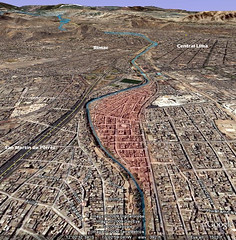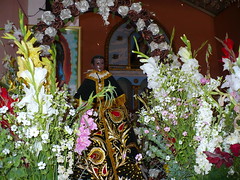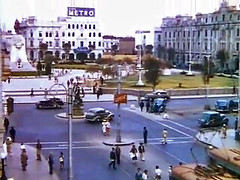Chan Chan under constant threat
Only 5 of the 134 projects of the nine-year-old “master plan” have been executed to date
Repeated illegal land invasions by locals one of the principle problems for the ancient site
Chan Chan, the ancient capital city of the Chimú, was declared a UNESCO World Heritage site in 1986 because of its extraordinary architectural and historical importance. Unfortunately, the list World Heritage sites isn’t the only UNESCO list it is on. Due to its nature – it’s the largest mud city in the Americas in an area that can suffer heavy rains due to the El Niño phenomenon – but also due to a disgraceful lack of care and mismanagement, it is also on UNESCO’s “at risk” list.
Today, almost 26 years after it was declared endangered, it still remains very much at risk. In fact, not only did UNESCO not take it off the endangered list in the recent meeting in Spain, but they also threatened to remove its status as a World Heritage site.

In Martin Garcia's photo above you can see the methods used to protect the adobe walls from the rain. This is a recent improvement.
Although UNESCO recognises the work done so far to implement the so called “master plan” of restoration and preservation, they are decisively unhappy at the lack of development of a long-term plan, as well as the speed of the work. It has taken 9 years to complete 5 of the 134 projects detailed on the plan that was created in 2000.
There is still a lot of work to be done, only one of the Chimú palaces that make up the huge 20km2 site, the palace known as Nik An or Tschudi and regularly visited by tourists, has been restored and preserved in a visible way, and even then, not entirely.
Miguel Lázaro Plasencia, director of the entity in charge of the site since 2006, told newspaper El Comercio that the fact that so little of the master plan has been implemented is proof that the Government and authorities show little interest in preserving Chan Chan. In fact, it was only recently that a mining company petitioned to have the protected archaeological reserve dug up and mined – important governmental departments, such as the national institute in charge of cultural heritage (the INC) and the local mayor’s office couldn’t find the time to submit official objections.
He explains that this year, S/.25 million ($8.3m) was requested from swelling national coffers in order to carry out a further 7 restoration projects. Only S/.1.5 million or $500,000 was allocated, and what is left of the ruins will be exposed for a further year to the elements. Lázaro states that with such a meagre amount it would be extremely difficult to follow the established UNESCO emergency timeline laid out in 2007, making it likely that 2009 will be the last year that UNESCO recognises Chan Chan’s World Heritage status. What is left of the ruins will be an “ex-UNESCO World Heritage site” – something that would probably not go down well with tourists.
On the topic of illegal land invasions, according to El Comercio, the situation is alarming. The INC, charged with protected the so-called “intangible” archaeological area, states that some 263 people claim to be land owners there. Each of these people has been ordered to move, but until now, none have. Instead they fence off and work the land, demanding that the government issue them with titles.
This is a huge problem for the authorities. In other protected natural or archaeological zones in the region that have been invaded by land-squatters, which the police have to move in to clear, the criminals arm themselves and attack the officers. In the Bosque de Pomac reserve, two of unarmed officers lost their lives – an event that has and will cost yet more lives in the future as police are now armed with live bullets when dealing with protesters.
The INC hope with the approval of a law still not introduced since written in 2004, the invaders will be forcefully removed and those who have illegally constructed large factories in the surrounding area will be forced to tear them down.
Ten other sites in Peru are listed by UNESCO as World Heritage sites, some of which are usually on the verge of falling into the endangered category. These are the historical centres of Cusco, Lima and Arequipa, Machu Picchu, Chavín de Huántar, the Nasca Lines, Río Abiseo, the two natural wonders of Huascarán and Manú reserves as well as, announced recently, the new additional of Caral. This gives authorities in Peru access to a number of sources of international expertise and assistance in management and restoration.
Tags: chan chan, INC, invasiones, restoration, ruins, unesco








![Potato Planting in Chinchero [Featured]](http://farm4.static.flickr.com/3198/2687152654_97a0cc29fb_m.jpg)
